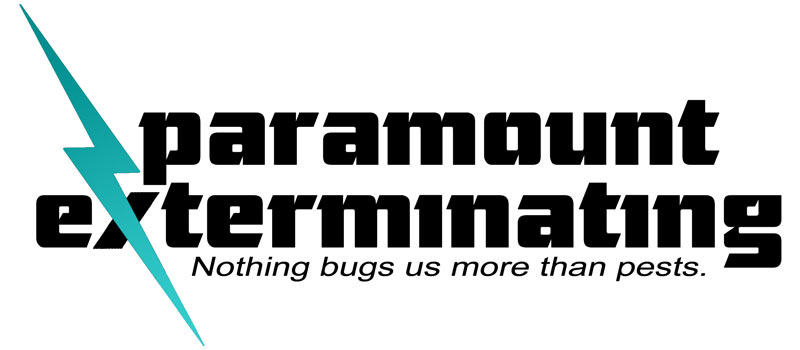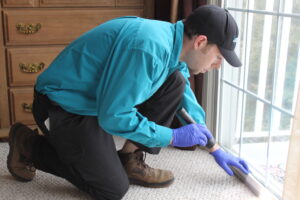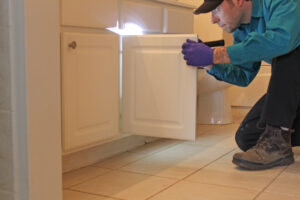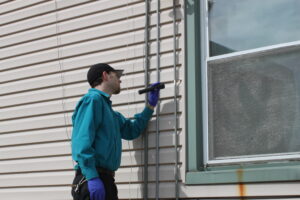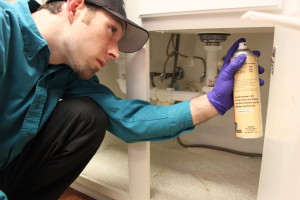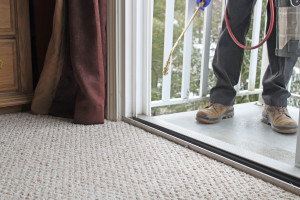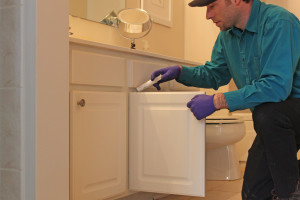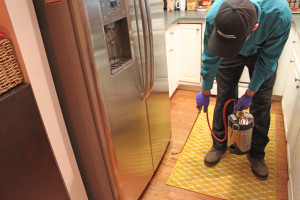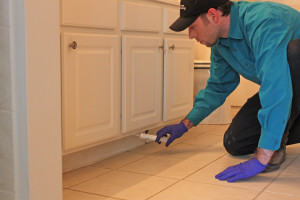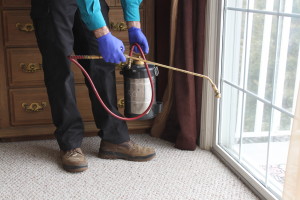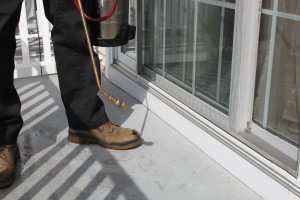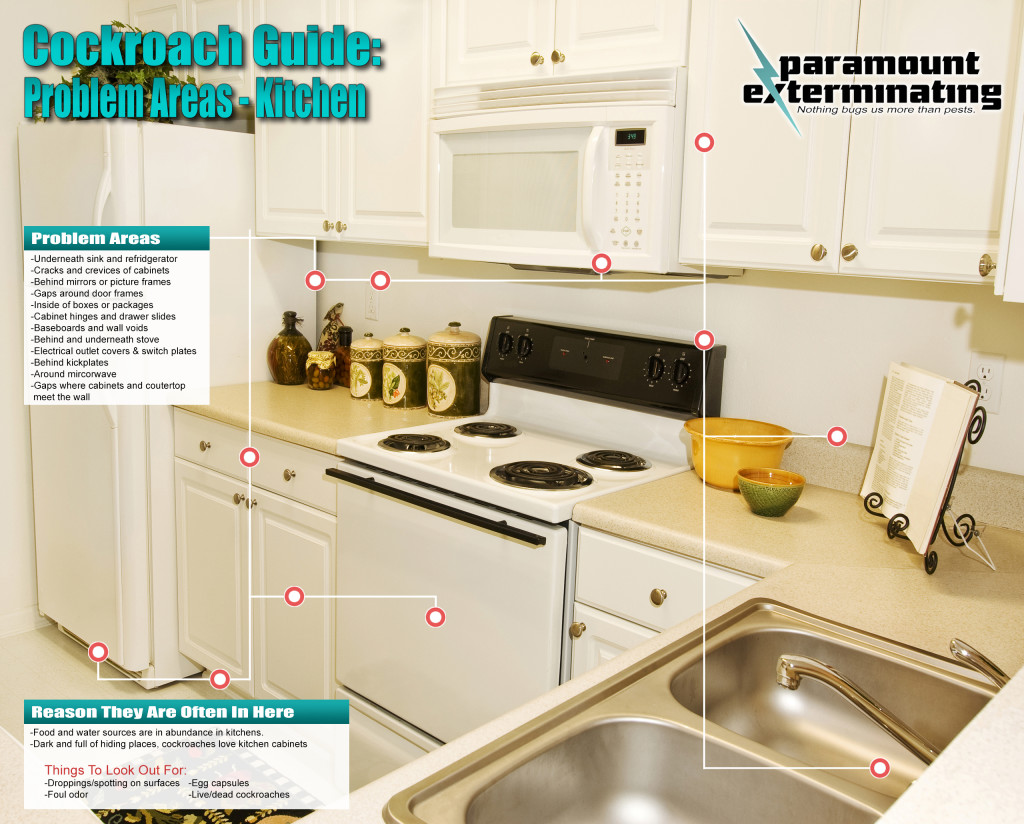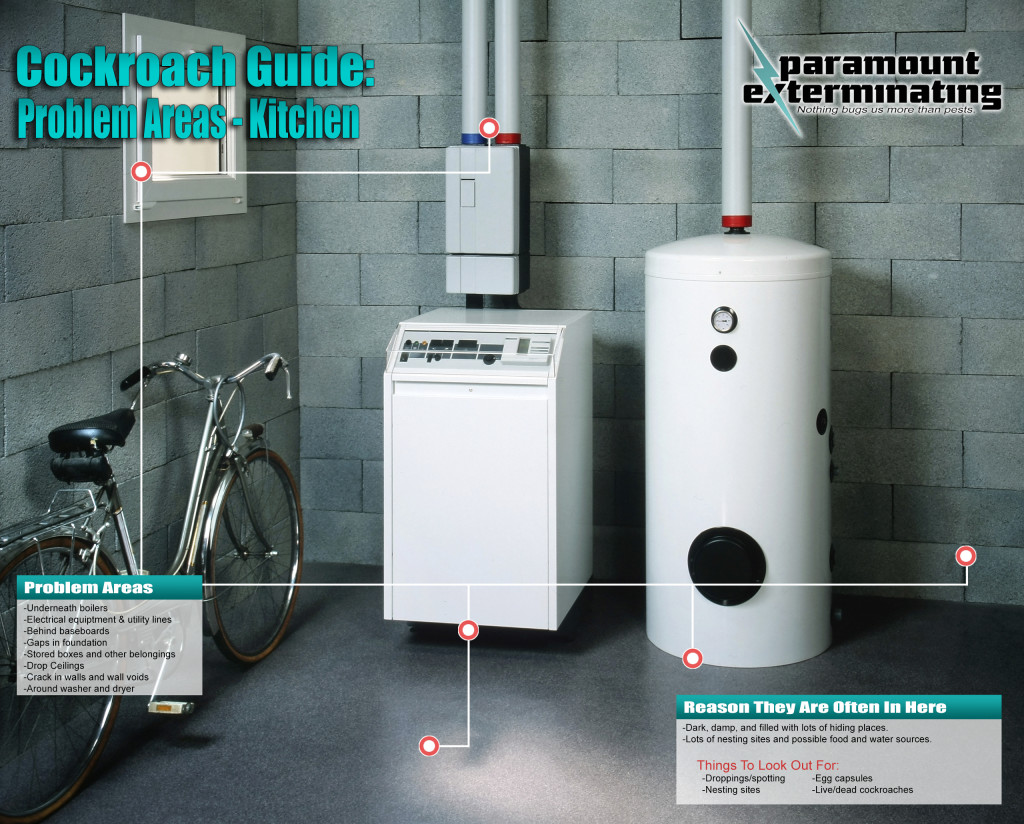CALL US TODAY! 800-273-6050
REQUEST YOUR FREE ESTIMATE
PUTTING ROACHES IN THEIR PLACE
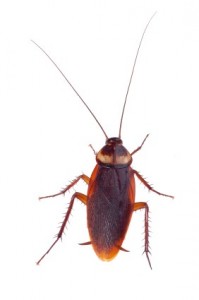 Complete cockroach control – Your technician is your cockroach expert. They will assess the problem, create a treatment program, and perform the initial treatment. Spraying, baiting, and trapping methods are all applied based on what the technician finds during your inspection.
Complete cockroach control – Your technician is your cockroach expert. They will assess the problem, create a treatment program, and perform the initial treatment. Spraying, baiting, and trapping methods are all applied based on what the technician finds during your inspection.- Maintaining pressure – We schedule you for follow up visit 1-2 weeks after your initial service so that your technician can assess the treatment program and replace controls as needed.
- Long-term prevention – Your technician will find any entry points, food/water sources that may attract them, and educate you on how to prevent future problems
- Additional follow-ups – Sometimes additional follow-up services are needed to take care of more advanced problems. Your technician will discuss this with you if they feel its necessary.
CALL US TODAY!
NJ Toll Free
800-273-6050
Newark
973-242-2212
Rutherford
201-945-7066
Jersey City
201-435-5900
Ridgewood
973-423-0234
Union City
201-865-7799
COCKROACH FACTS
Pest Entry: Cockroaches can enter your home in a variety of ways including outside cracks and crevices, pipes that enter the home, vents and sewer lines. They also gain entry when carried in on boxes, grocery bags and other items that get brought into the home. They can even be brought in a person’s clothing.
Environment: Cockroaches need warmth, food and water to survive, making your home is an ideal location to cockroaches to live and reproduce. They generally prefer tight hidden places that offer protection like small cracks and crevice. They are scavengers that will eat almost anything and require little water to survive, keeping them active all year long. Generally found in kitchens, bathrooms, basements and areas where water is available.
Reproduction: Cockroaches can reproduce very quickly and in large numbers. This makes them a serious threat and difficult to treat using over-the-counter products.
Sightings: If you’ve seen one cockroach, chances are there are more that you haven’t seen. Since they are nocturnal pests, people often see them at night when turning on kitchen and bathroom lights and they quickly scatter. Cockroaches seen during the day may indicate an infestation, as they were like forced out by overcrowding.
Heath Concerns: Cockroaches have been known to host a variety of pathogens and diseases and dust from their droppings and skin casts have been known to cause allergic reactions in children and adults.
Home Remedies: Cockroaches are a constant threat and unfortunately, most over-the-counter products simply won’t work. This is because their eggs remain unaffected by over the counter products, only destroying the adult population. Once those eggs hatch, the problem starts all over again. It requires special tools, training and expertise to fully eliminate these pests.
WHAT TYPE OF COCKROACH IS IT?
- German Cockroach
- American Cockroach
- Oriental Cockroach
- Brown Banded Cockroach
- Tawny (Spotted Mediterranean) Cockroach
 Name:
Name:
German Cockroach (Blatella Germanica)
Physical Traits: Light brown in color; they can be identified by two brown stripes that run vertically along the thorax.
Habitat/Preferences: Commonly seen indoors, these pests stay close to areas that have warmth, food and water. This makes them a regular pest in homes, apartment buildings and food establishments. They will hide in tight spaces during the day and search for food at night. Seeing several of these species during the daytime may indicate, as this is commonly due to overcrowding.
Diet: Non Specific; scavenger diet
Reproduction: High reproductive rate; females can lay one egg capsule, containing an average of 30 eggs, every 25 days.
 Name: American Cockroach (Periplaneta Americana)
Name: American Cockroach (Periplaneta Americana)
Traits and Appearance: They are the largest of the species that are commonly found in New Jersey, averaging 2 inches in length. Reddish brown in color, with wings the same length as their body.
Habits and Habitat: They prefer areas that are warm and damp, and are often found in sewer pipes and basements. They thrive in temperatures between 70 – 80 degrees Fahrenheit. American cockroaches are the least evasive of the common species, often seen during the day. They are the only species common in New Jersey that can fly, although this is generally a rare occurrence.
Diet: Scavenger diet. Can feed on almost anything, especially when food source is limited. Needs water to survive. Prefers decaying material.
Reproduction: Female American cockroaches can lay many eggs despite only mating once. They lay protected capsules that contain an average of 13 eggs each. Nymphs, immature cockroaches, go through a number of molting stages and take nearly two years to reach maturity. An adult American cockroach can live over a year.
History: Originally found in Africa, they were thought to have been brought to America on trading ships.
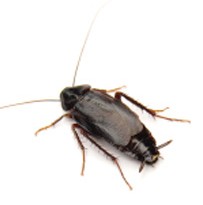 Name: Oriental Cockroach (Periplaneta Americana)
Name: Oriental Cockroach (Periplaneta Americana)
Traits and Appearance: They are the largest of the species that are commonly found in New Jersey, averaging 2 inches in length. Reddish brown in color, with wings the same length as their body.
Habits and Habitat: They prefer areas that are warm and damp, and are often found in sewer pipes and basements. They thrive in temperatures between 70 – 80 degrees Fahrenheit. American cockroaches are the least evasive of the common species, often seen during the day. They are the only species common in New Jersey that can fly, although this is generally a rare occurrence.
Diet: Scavenger diet. Can feed on almost anything, especially when food source is limited. Needs water to survive. Prefers decaying material.
Reproduction: Female American cockroaches can lay many eggs despite only mating once. They lay protected capsules that contain an average of 13 eggs each. Nymphs, immature cockroaches, go through a number of molting stages and take nearly two years to reach maturity. An adult American cockroach can live over a year.
History: Originally found in Africa, they were thought to have been brought to America on trading ships.
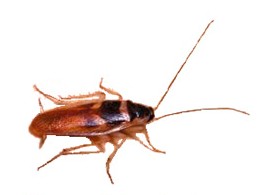 Name: Brown Banded Cockroach (Supella longipalpa)
Name: Brown Banded Cockroach (Supella longipalpa)
Traits and Appearance: The Brown-banded cockroach gets its common name from the two yellowish-brown stripes on its wings. They measure about half an inch to 5/8ths inches in length.
Habits and Habitat: Brown-banded cockroaches are also unique in that they require less water to survive than most other species of cockroach. This means that they are often found in places that are warm and dry, rather than the damp areas that other species prefer. They are often found in high locations, and can be found infesting furniture and electronics like TV’s and computers. They are nocturnal, and they are able to fly for short distances.
Diet: Scavenger diet; like most species, these pests will eat everything from decaying organic matter to bath soap.
Reproduction: The Brown-banded cockroach female lays egg capsules that contain around 17-18 eggs. “Nymphs”, or immature young, mature over the course of five to six months, and adults can live almost a full year. The female will carry her egg capsule with her for the first day or two before attaching it to an unused surface in an unexposed area. This will protect the egg capsule until the eggs have an opportunity to hatch.
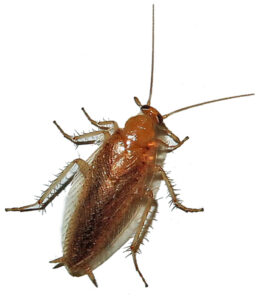 Name: Tawny (Spotted Mediterranean) Cockroach
Name: Tawny (Spotted Mediterranean) Cockroach
Physical Traits: Light brown in color but with a unique transparancy to their pronotum and small speckles or dots on their bodies.
Habitat/Preferences: Unlike most cockroach species found in NJ, these are an outdoor species of cockroach that are often seen indoors due to their attraction to light. The males can fly, and they often make their way into structures at night through small cracks and crevices in areas with exterior lighting. We have found a siginificant increase in the number of reported sightings in the last few years.
Diet: Non Specific; scavenger diet
Reproduction: Two year life cycle, not known to reproduce indoors.
Why Families and Businesses Choose Paramount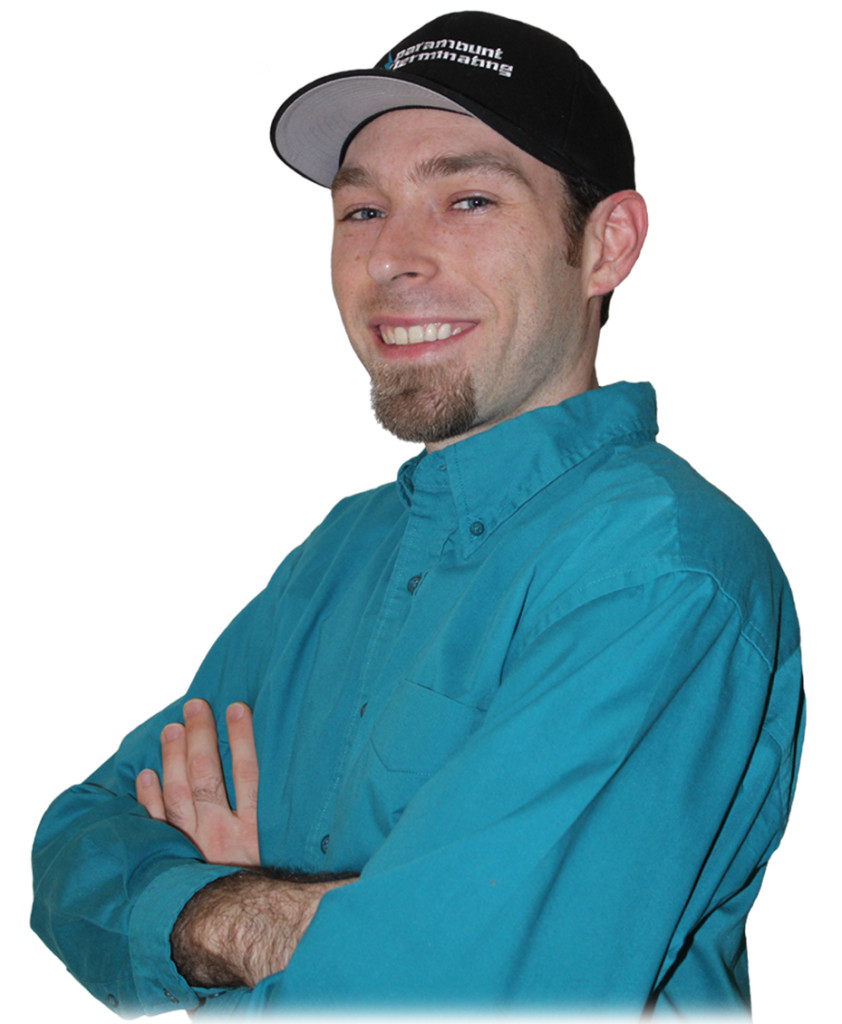
- Faster Service – Get your services scheduled quickly and on YOUR time. No one wants to wait weeks for treatment, and we get that.
- Local and Reliable – We have pest control technicians in Union City, Jersey City, Hoboken, Weehawken, North Bergen, and Hudson County everyday to assist our customers at a moments notice!
- More Efficient – We get things done right the first time, saving you time, money, and frustration.
- Better Tools – Our technicians only use the best products available on the professional market making treatments more effective and longer lasting.
- Better variety of treatment methods – Including green treatments and baiting programs.
- More Experience – We’ve been defeating all types of pests since 1930, and have the most experienced technicians in the industry.
HOURS OF OPERATION
Monday – Friday: 8am – 4pm
Saturday: 8am – 2pm
Sunday: Closed
• 24-Hour Emergency Service Available •
• Free Evaluations •
Proudly Serving Jersey City, West New York, Guttenberg,
Hoboken, Weehawken, Secaucus, & All of Hudson County
CALL US TODAY
Union City, NJ Rutherford, NJ Ridgewood, NJ
(201) 865-7799 (201) 945-7066 (973) 423-0234
Newark, NJ NJ Toll Free Jersey City, NJ
(973) 242-2212 (800) 273-6050 (201) 435-5900
